19 Repertoire
Practicing
Practicing builds habits, both good and bad. In your practice, you want to minimize the number of mistakes you make and maximize the number of times you play correctly. When you make a mistake, stop and try to determine what went wrong. Slow down and do that passage three times correctly to increase your positive habit strength.
Hands Separate vs. Hands Together
It is natural to begin learning a piece by practicing each hand separately. This allows you to ensure accuracy of pitches, rhythms, and fingerings in a simpler texture. However, you should move past this step as soon as possible. Learning each hand separately does not effectively prepare you to coordinate both hands simultaneously.
Use the following strategies to coordinate hands together
- Slowly: Don’t be afraid to start extremely slowly. There is a tempo you can play it hands together without mistakes. Find that tempo and increase from there.
- Play reduced versions of one or both hands (examples from 19.1: Gurlitt’s Etude in C Major, Op. 82, No. 15)
Play the notes on the downbeat of each measure with both hands, then rest until the next downbeat.

Play the complete right-hand part while the left hand plays only downbeats.

Play the complete left-hand part while the right hand plays only downbeats.

Block all the notes in one hand as if it were a chord while the other hand plays as written.
(This works well for passages where one hand provides an accompaniment.)

Additional Practice Strategies
- Paving the Path: play one measure to the downbeat of the next measure perfectly, three times in a row with the metronome (could be modified to two or four measure groups if you’re ready)
- Increasing Speed with Metronome: practice a four-measure chunk (end on the downbeat of the fifth measure) with metronome, gradually increasing the tempo from slow to fast
- Build Backwards: play the last measure of a phrase, then the last two measures, then the last three measures, etc.; repeat for each phrase
Repertoire
After you’ve mastered these pieces in their original keys, transpose them to other keys and record your progress in the checkboxes following each piece.
19.1 | Etude in C Major, Op. 82, No. 15
Cornelius Gurlitt
(Germany, 1820–1901)


19.2 | Etude in C Major, Op. 101, No. 16
Ferdinand Beyer
(Germany, 1802–1863)
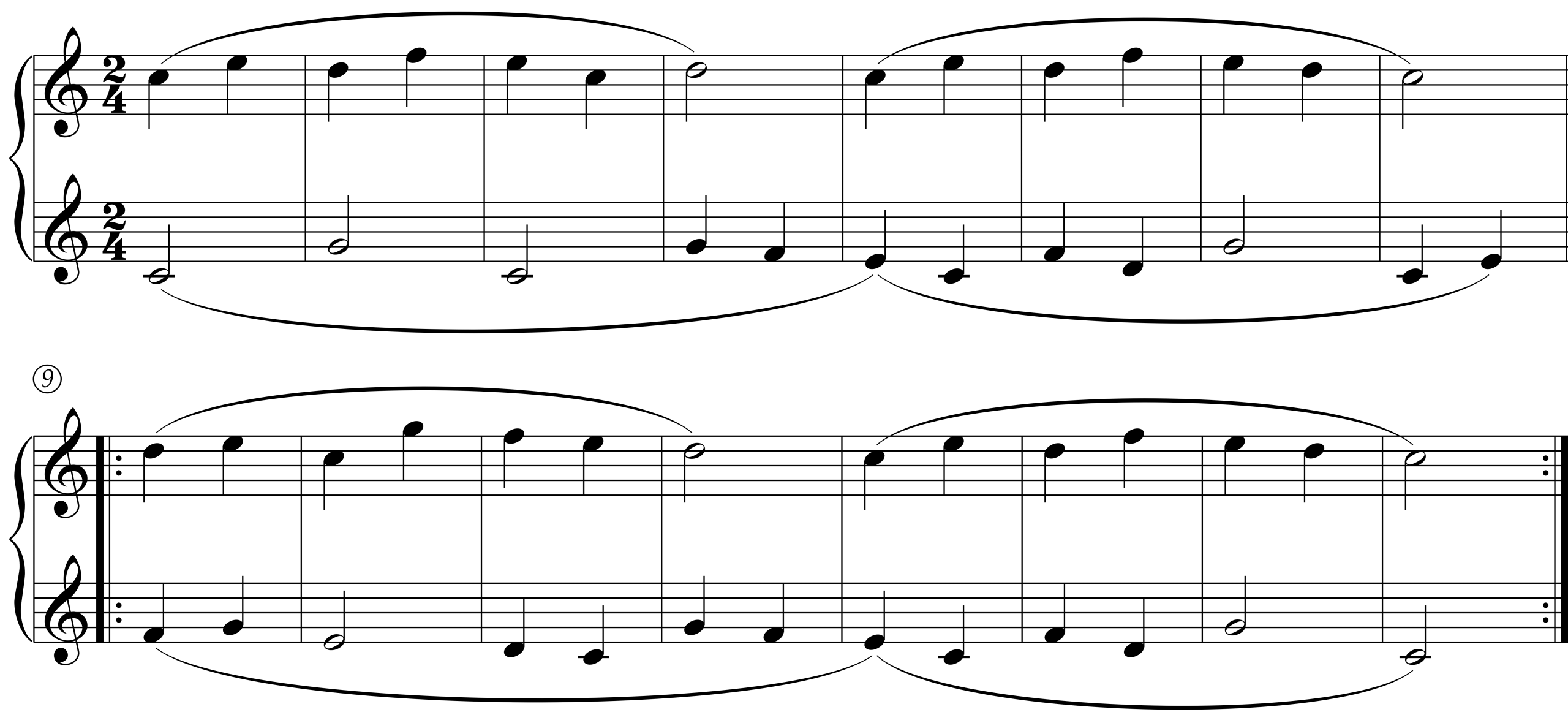

19.3 | Etude in C Major, Op. 101, No. 17
Ferdinand Beyer
(Germany, 1802–1863)
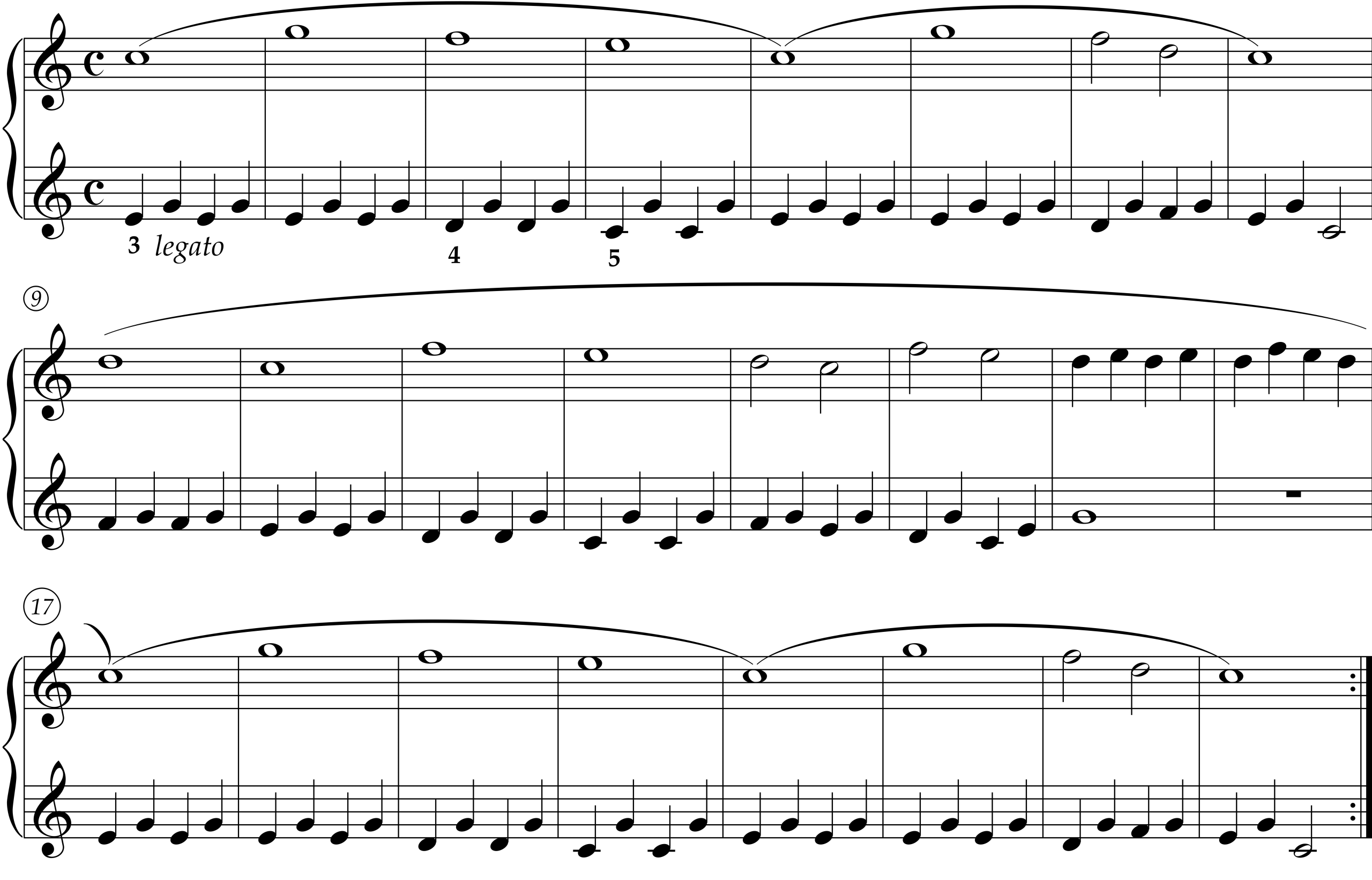

19.4 | Etude in C Major, Op. 101, No. 23
Ferdinand Beyer
(Germany, 1802–1863)
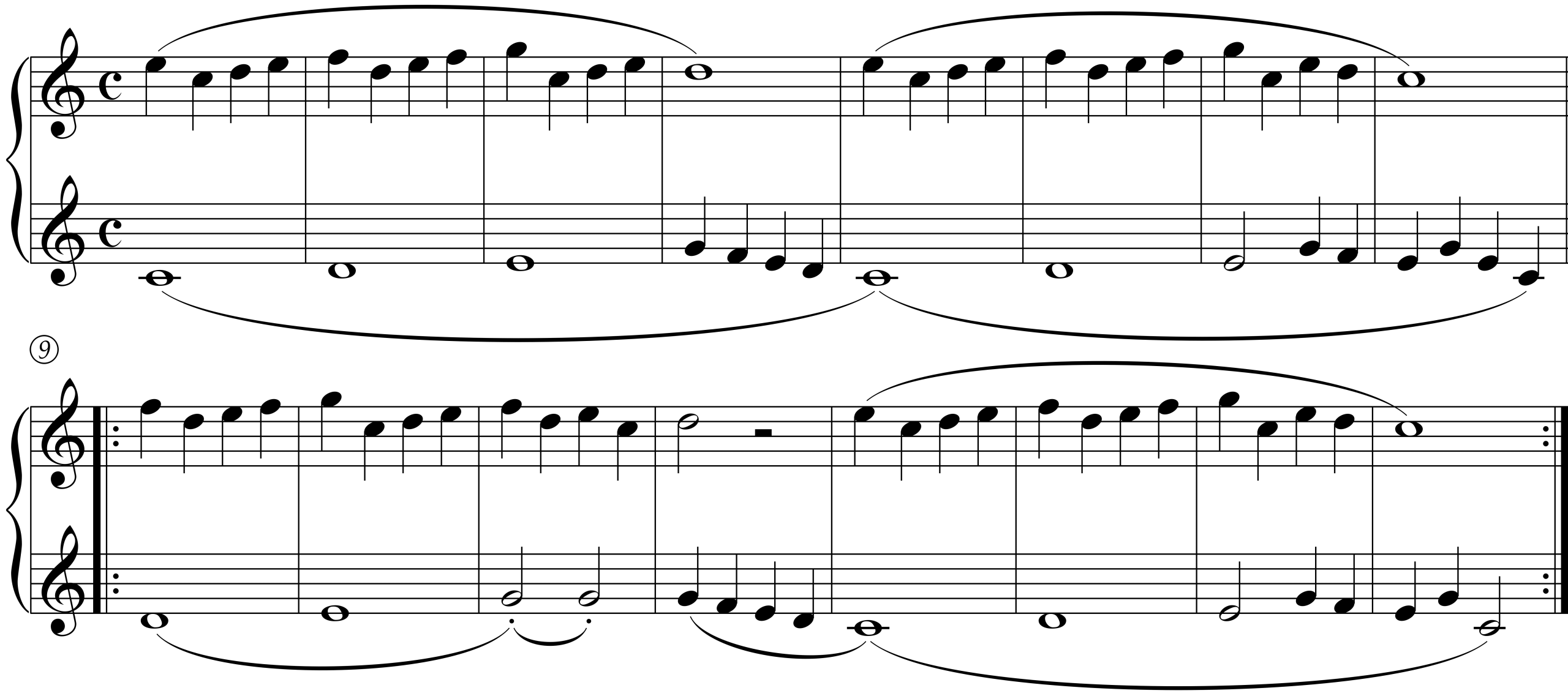

19.5 | Etude in G Major, Op. 101, No. 39
Ferdinand Beyer
(Germany, 1802–1863)
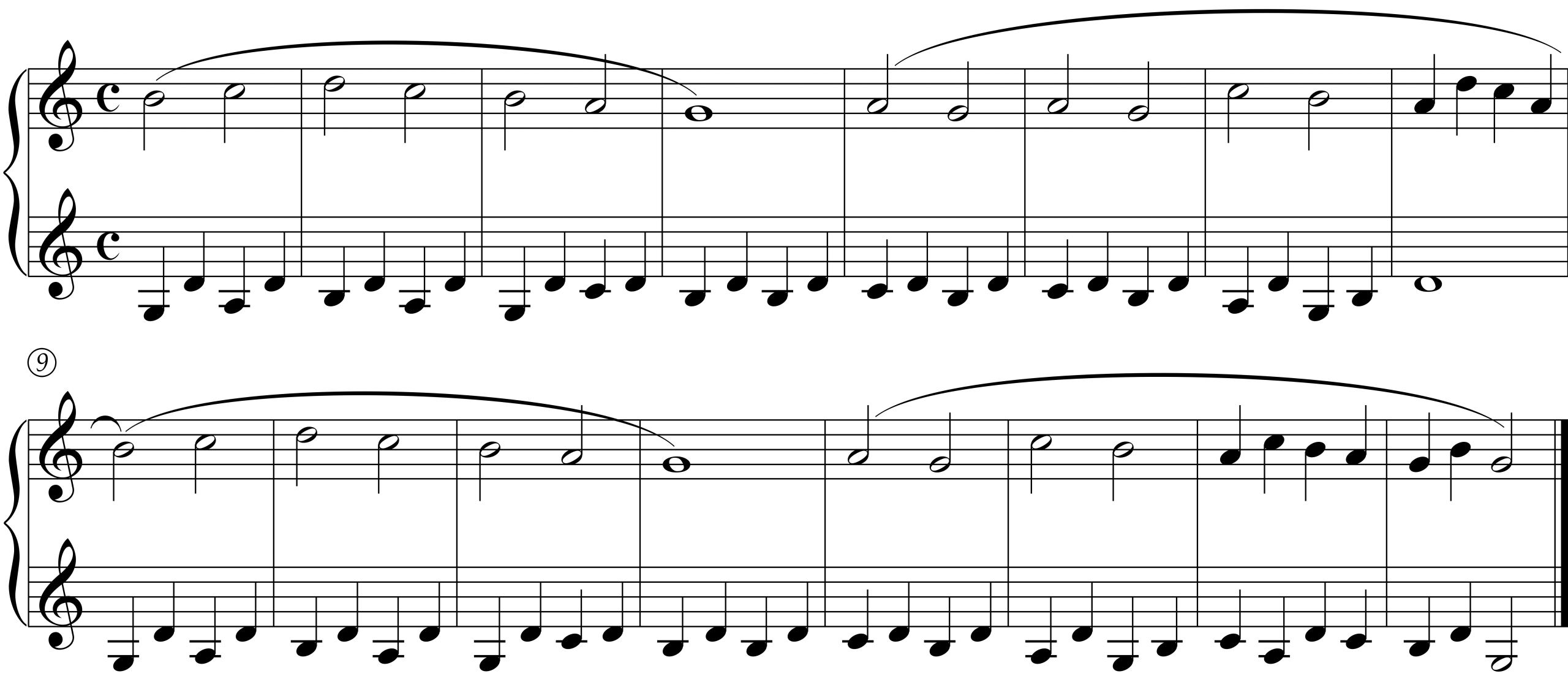

19.6 | Etude in C Major, Op. 82, No. 16
Cornelius Gurlitt
(Germany, 1820–1901)
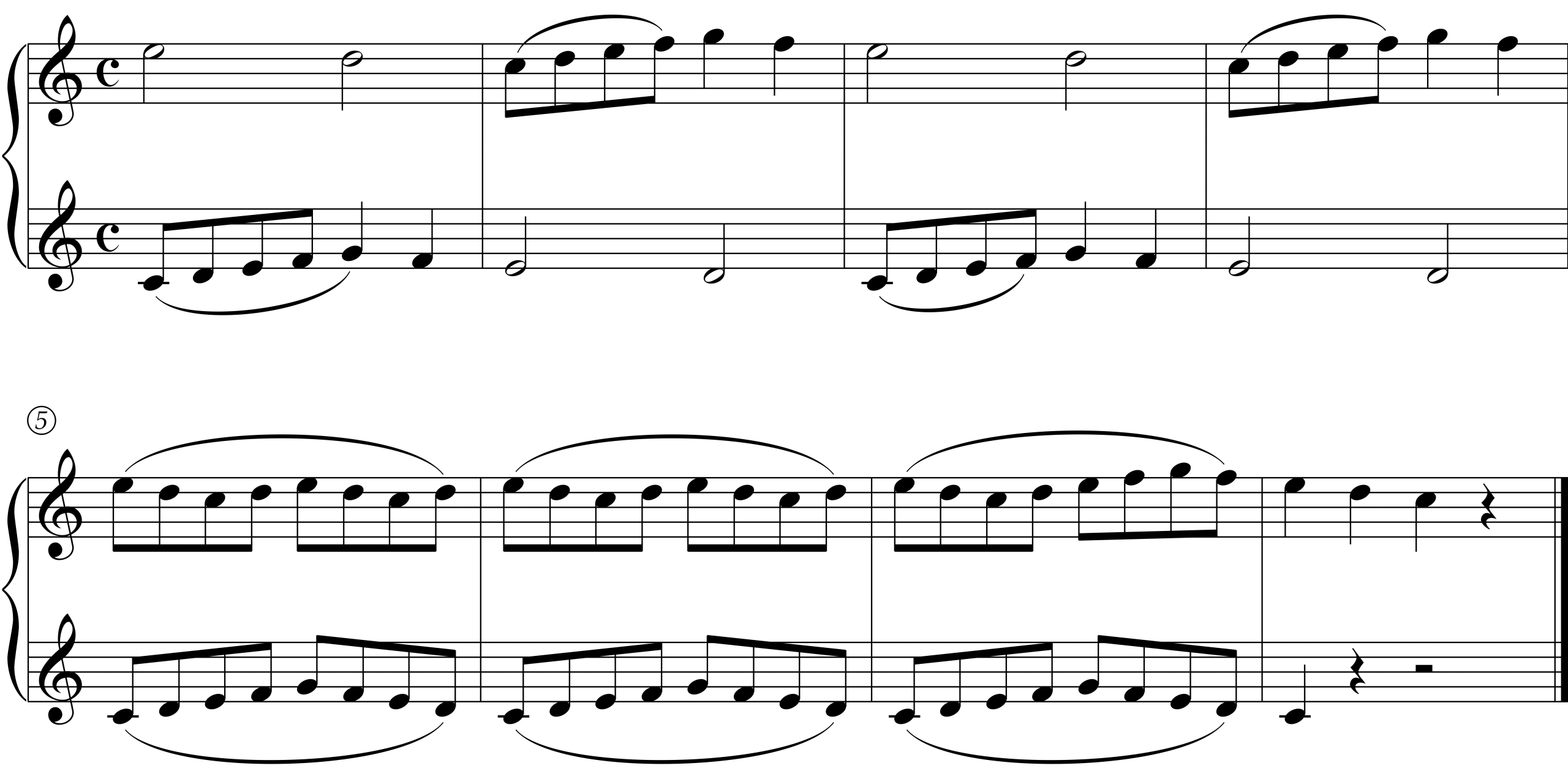

19.7 | Etude in C Major, Op. 82, No. 18
Cornelius Gurlitt
(Germany, 1820–1901)
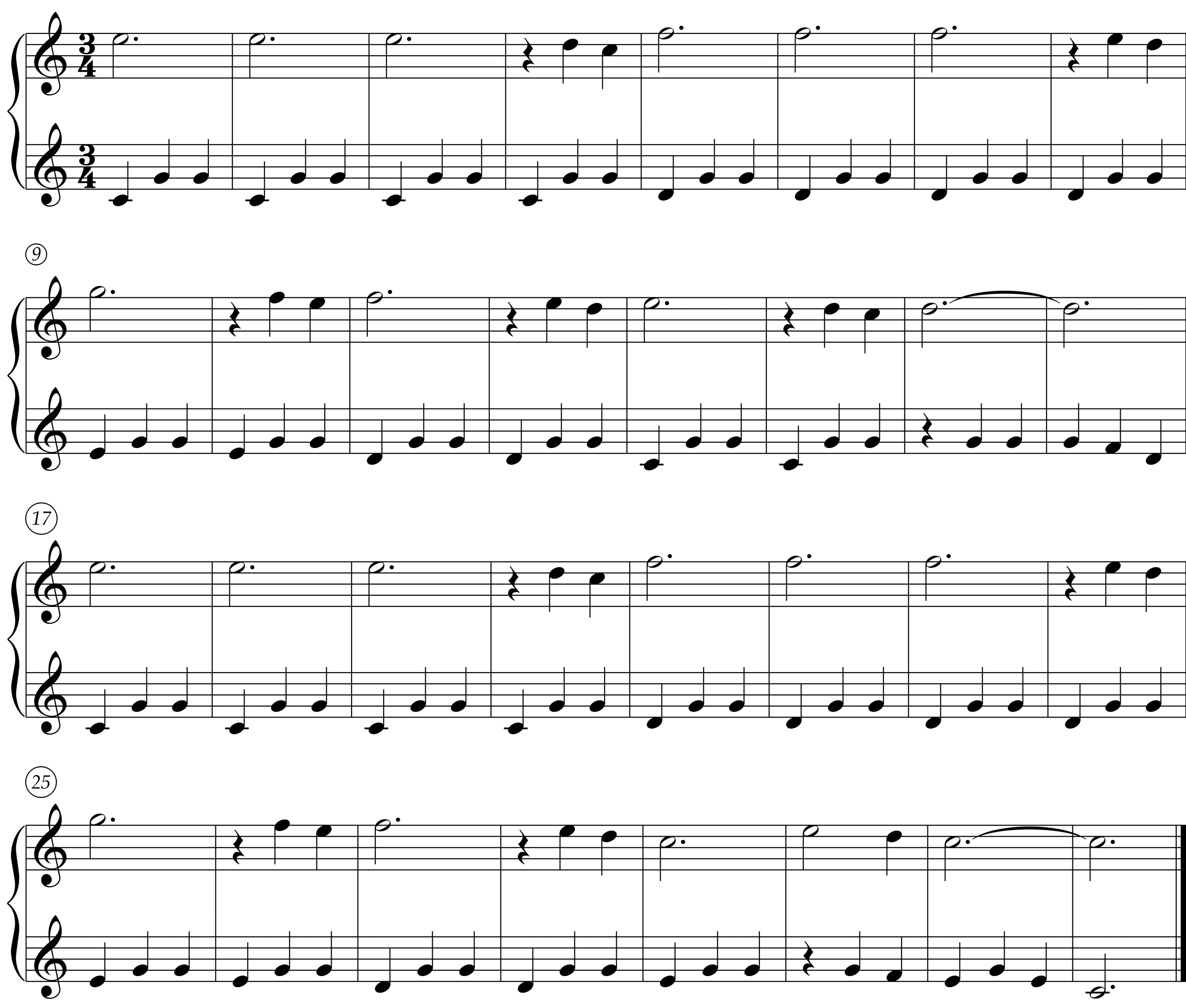

19.8 | Etude in C Major, Op. 82, No. 20
Cornelius Gurlitt
(Germany, 1820–1901)

